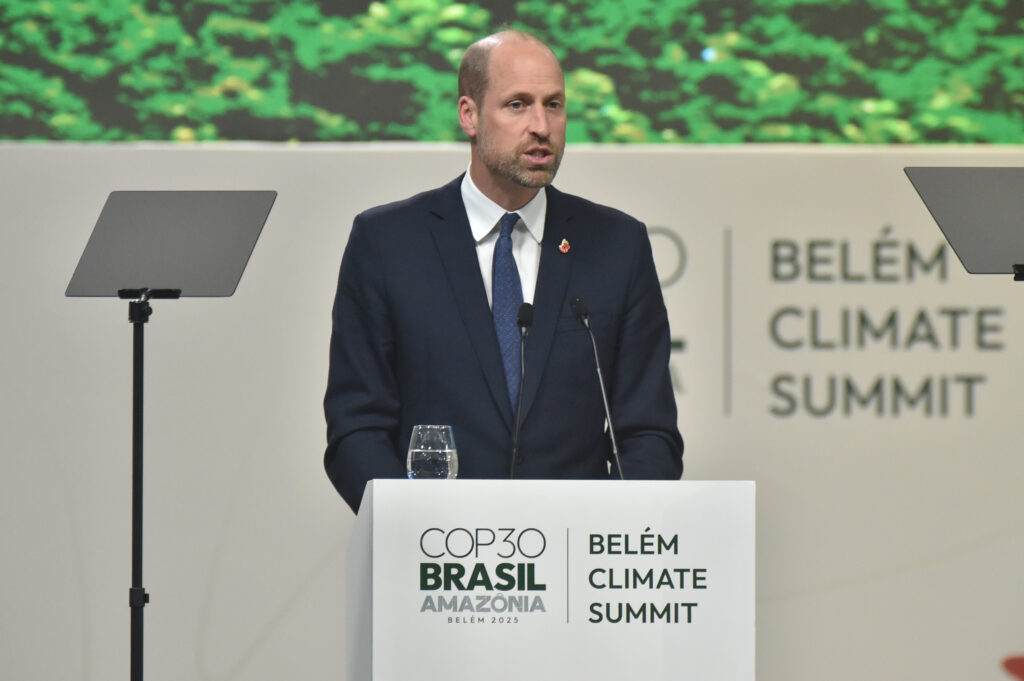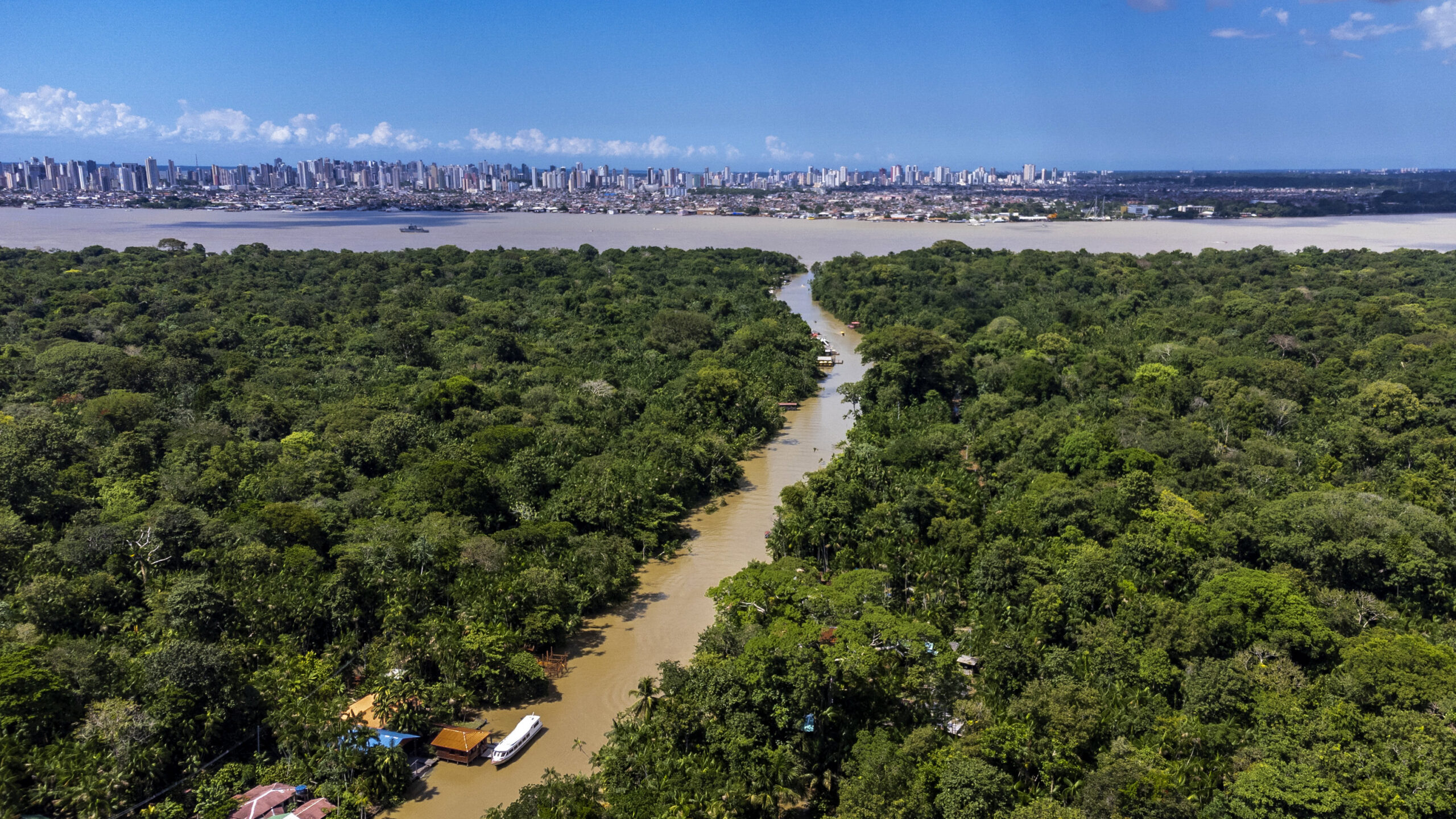Salvador, Brazil – Several European countries jointly pledged $ 5.6 billion USD to protect tropical forests amid the rise of global heating during the COP30 conference held in Belém, Brazil this week.
The governments of Germany, Norway, France and Portugal announced their donations to Tropical Forest Forever Facility (TFFF), a fund investment created by the Brazilian Ministry of Finance that aims to collect enough capital to protect tropical forests in a range of countries including Ghana, the Democratic Republic of Congo (DRC) and Brazil. The initiative was launched on Friday, November 7- three days before the Climate Summit officially began.
TFFF has been endorsed by 53 countries but only financially supported by a few. Norway pledged the biggest sum: the Scandinavian nation announced a $3 billion USD investment over ten years, under the condition that the investment raises $12.7 USD billion in the next 13 months.
France, meanwhile, pledged $500 million USD, although conditions for the donation have not been disclosed. Portugal committed €1 million (1.15 million USD), while Germany declined to reveal the amount of its contributions.
The TFFF has its own investment tracker, which accounts how different countries have contributed- and how much is still needed to reach their goal of $25 billion USD in governmental sponsor capital.
The long game of environmental investment and the risk of greenwashing
Self-described as a “new way to finance conservation”, Brazil’s TFFF seeks to raise a total of $125 billion USD from both governments and foundations, $100 billion USD of which will be held in private investments.
Return for investors, however, may take from 30 to 40 years to materialize. The TFFF is expected to be led by the “Global South Tropical Forest Countries” and will focus on a diversified portfolio of investments, though the sectors involved have not yet been disclosed.
“The structure and operational parameters of the fund are currently being discussed by stakeholders in the TFFF. When the design of the fund has been completed, these specifics will be publicly announced,” the TFFF claims.
Countries which successfully restore and sustain their tropical forests — including Colombia, Peru, Indonesia, Brazil, Ghana and the DRC — will also receive a share of the funds once satellite imagery confirms their forest cover.
The tech-enabled mechanism establishes a performance-based system for environmental protection, and foresees payment reductions of 100 to 200 units per deforestated hectare or in cases of land degradation.

Credit: Paulo Mumia/COP30 via Flickr
According to the Brazilian Ministry of Finance, which is responsible for the project’s implementation, “the model allows investors to recover their funds, at a market rate of return, while at the same time contributing to forest conservation and reducing carbon emissions.”
Vitelio Brustolin, adjunct-professor at Columbia’s University School of International and Public Affairs (SIPA) and researcher at Harvard University’s Department of the History of Science, believes Brazil’s fund has yet to demonstrate a reliable model for returns and clear performance rules aligned with transparency.
“It’s not entirely clear who will manage the fund, how investment decisions will be made, what criteria will define the beneficiary countries and projects- and without clear rules and independent audits, there’s a risk of political capture or mismanagement of resources”, Brustonlin told EU Reports.
Although the researcher characterized the TFFF as a potentially transformative idea that can create a predictable financial flow for the conservation of tropical forests and reduce economic pressure for deforestation, it might not work in the long-run.
“There are positive signs in the short term, but real viability at scale depends on difficult technical decisions, such as how capital will have to be invested, how payments will be guaranteed to generate additional conservation, how rights will be protected, and how market risk will be managed”, he added.
If these issues remain unresolved, the fund risks being “gigantic in name and small in real effect,” says Brustonlin. Like any investment fund, the TFFF can be sensitive to interest rates and market relations, for which it is essential to ensure payments are made only when there is verified evidence of conservation outcomes that could not have occurred without the fund.
Without a robust monitoring and verification system, he cautions there is danger in financing projects that deliver no real environmental benefits- known as greenwashing.
The UK’s felt absence after a “Brazilian loss”
Among the billions pledged by European nations to the TFFF, one absence stood out. Despite Prince William’s praise for Brazil’s environmental policies, the Prince of Wales did not announce any British contribution to the fund. He represented his father, King Charles III, during the royal visit to Brazil- which included participating in COP30.

Credit: Paulo Mumia/COP30 via Flickr.
“Action is being taken on emissions. Renewable energy is advancing at record rates and strengthening economies worldwide. Adaptation strategies are also growing. And Brazil’s proposal for the TFFF is a visionary step towards climate stability”, the heir to the British throne stated.
The TFFF’s launch came days after the Earthshot Prize ceremony in Rio de Janeiro- an initiative founded by Prince William- where the Brazilian project re.green won £1 million in the “Protect & Restore Nature” category. Marina Silva, Brazil’s Minister of Environment and Climate Change, represented the project during the event hosted by the prince.
The TFFF also competed for the award, but did not win.
“The government clearly expected a symbolic British contribution, especially given the at least public alignment that was attempted between the current Brazilian government, President Lula, and Prince William, in the discourse about preserving in order to invest,” said Brustolin.
“And the absence of the contribution was interpreted as a gesture of opposition […] a game of ‘wait and see’. The United Kingdom signaled political support but wants to observe how the TFFF will be structured before committing resources,” the scholar concluded.
Featured image: Drone view from Combu Island, with the city of Belem in the background.
Credit: COP30 Brasil Amazônia via Flickr
Author: Alex Ferro










